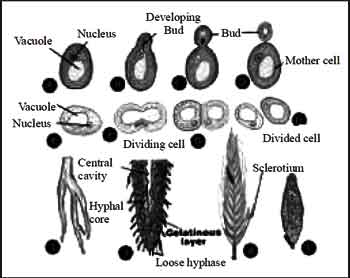(HOT) UPSC Current Affairs 2025 PDF
NEW! The Gist (NOV-2025) | E-BOOKS
(Sample Material) IAS PRE GS Online Coaching : General Science - "The Reproductive System"
Sample Material of Our Online Coaching Programme
Subject: General Science
Topic: The Reproductive System
INTRODUCTION
The ability to reproduce is one of the unifying characteristics of all living things. Sexual reproduction produces offspring that are genetically different from their parents.Asexual reproduction produces offspring genetically identical to their parent.
ASEXUAL REPRODUCTION
-
Asexual reproduction allows an organism to rapidly produce many offspring without the time and resources committed to courtship, finding a mate, and mating.
-
Fission, budding, fragmentation, and the formation of rhizomes and stolons are some of the mechanisms that allow organisms to reproduce asexually.
-
The hydra produces buds;
-
starfish can regenerate an entire body from a fragment of the original body.

-
The lack of genetic variability in asexually reproducing populations can be detrimental when environmental conditions change quickly.
SEXUAL REPRODUCTION
-
In sexual reproduction new individuals are produced by the fusion of haploid gametes to form a diploid zygote.
-
Sperm are male gametes, ova (ovum singular) are female gametes.
-
Meiosis produces cells that are genetically distinct from each other.
-
fertilization is the fusion of two such distinctive cells.
-
Rotifers will reproduce asexually when conditions are favorable by having females produce eggs by mitosis.When conditions deteriorate, rotifers will reproduce sexually and encase their zygotes inside a resistant shell. Once conditions improve, these eggs hatch into diploid individuals. Rotifers thus use sexual reproduction as way to survive a deteriorating environment.
-
Sexual reproduction offers the benefit of generating genetic variation among offspring, which enhances the chances of the population’s survival.
-
Costs of this process include the need for two individuals to mate, courtship rituals, as well as a number of basic mechanisms described later.


